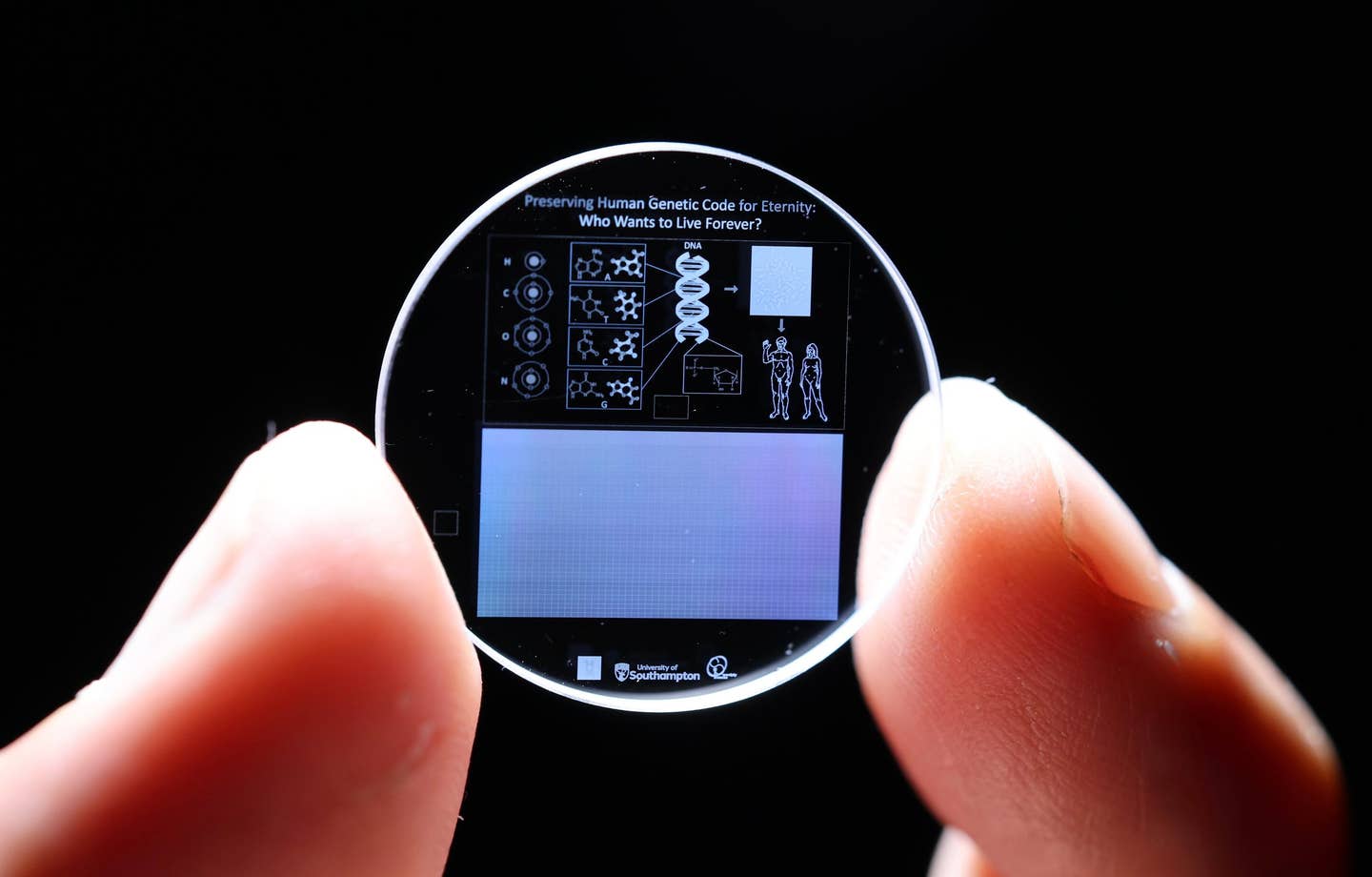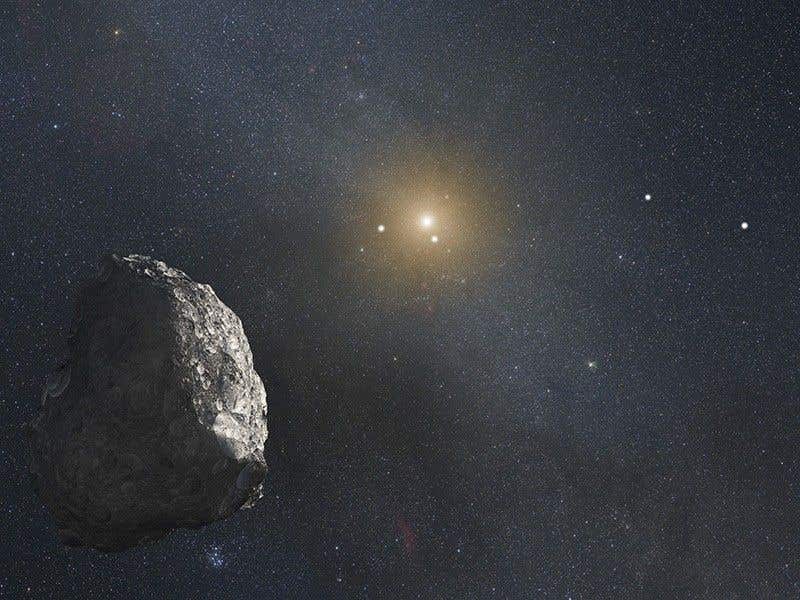5D memory crystal can store the entire human genome for billions of years
A groundbreaking data storage technology could preserve an entire human genome in a tiny 5D memory crystal.

The 5D memory crystal has the potential to last billions of years, offering an unprecedented solution for long-term data preservation. (CREDIT: University of Southampton)
A groundbreaking data storage technology could preserve an entire human genome in a tiny 5D memory crystal. Developed by researchers at the University of Southampton, this innovation has the potential to last billions of years, offering an unprecedented solution for long-term data preservation.
Beyond human genetics, the technology could safeguard the genomes of endangered species. If future science enables species revival, these stored genetic blueprints might help restore lost biodiversity. The crystals could also serve as an indestructible archive of human knowledge.
The Rise of 5D Memory and Eternity Crystals
Unlike conventional storage methods—hard drives, magnetic tapes, or optical discs—the 5D crystal doesn’t degrade over time. Standard formats fail within decades, but this breakthrough resists extreme conditions without data loss. It could endure for billions of years, even in the harshest environments.
This isn’t just theoretical. Since 2014, the crystal has held a Guinness World Record as the most durable data storage material. It withstands temperatures up to 1,000°C, extreme cold, fire, and even the radiation found in space. Its foundation lies in fused quartz, one of the most stable and heat-resistant materials known.
Beyond heat and radiation, the crystal is also remarkably tough. The research team reports that it can survive direct impacts of up to 10 tons per square centimeter, making it highly resistant to physical damage. In practical terms, it’s nearly indestructible.
Professor Peter Kazansky, who leads the project, describes this as a "new era" in data storage. His team at the Optoelectronics Research Centre (ORC) uses ultra-fast lasers to inscribe data within the crystal’s structure. This advanced method ensures the information remains intact over millennia.
Unlike traditional storage, which places data on a surface, this technique embeds it deep within the material. The process involves creating nanostructured voids, each as small as 20 nanometers, allowing for an unparalleled level of detail and permanence.
The name "5D" comes from the way data is encoded. The crystal stores information across five dimensions—two optical properties and three spatial coordinates. This design maximizes capacity while ensuring the data remains accessible for future generations.
Related Stories
The Promise of Genetic Revival
One of the most exciting potential applications of this technology is its role in preserving genetic information for future generations, or even for species restoration. While current science can’t yet synthesize complex organisms like humans or plants purely from genetic data, there have been major advancements in synthetic biology.
For example, Dr. Craig Venter’s team successfully created a synthetic bacterium in 2010, marking a significant step toward more complex genetic engineering.
As Professor Kazansky points out, simple organisms have already been synthesized from genetic material, and scientists have used existing cells to create viable living specimens in laboratory conditions. The possibility of storing genetic blueprints in an indestructible format opens up new avenues for future research.
"The 5D memory crystal opens up possibilities for other researchers to build an everlasting repository of genomic information from which complex organisms like plants and animals might be restored should science in the future allow," Kazansky says.
In their testing phase, the Southampton team stored the complete human genome on one of these crystals. This effort involved sequencing approximately three billion letters of genetic code, which were read 150 times each to ensure accuracy. The sequencing work was done in collaboration with Helixwork Technologies, a company that specializes in deep-read sequencing.
Safeguarding Civilization: Inside the Memory of Mankind Archive
The 5D crystal holding the human genome is now safely housed in the Memory of Mankind archive, a unique time capsule located in a salt cave in Hallstatt, Austria. This archive aims to preserve a variety of human achievements and knowledge for future generations, or possibly even for civilizations far in the future.
One of the most forward-thinking aspects of the crystal's design is its visual key, which might help an intelligent species or machine, long after humanity is gone, understand what the data contains and how to use it. As Professor Kazansky explains, "The visual key inscribed on the crystal gives the finder knowledge of what data is stored inside and how it could be used."
This key includes several universal elements that are designed to provide crucial contextual information. For example, the crystal shows the chemical elements essential to life—hydrogen, oxygen, carbon, and nitrogen. It also contains detailed diagrams of the four DNA bases (adenine, cytosine, guanine, and thymine), their molecular structures, and how they form the double helix of DNA. These visual clues extend further, showing how genes fit into chromosomes, which can then be inserted into cells.
The design also pays tribute to the plaques sent aboard NASA’s Pioneer spacecraft in the 1970s, which were intended to give any extraterrestrial civilization a sense of humanity's existence. "We don’t know if memory crystal technology will ever follow these plaques in distance traveled, but each disc can be expected with a high degree of confidence to exceed their survival time," says Professor Kazansky.
Endangered Species and Human Survival
Beyond preserving the human genome, this technology could serve as a long-lasting archive for the genetic information of endangered species. As extinction rates continue to rise due to habitat destruction, climate change, and other factors, having a reliable way to store genetic data could be crucial for future conservation efforts.
If future science advances to the point where extinct species can be revived, the data stored in 5D crystals might offer the key to restoring biodiversity.
The scientific applications don’t stop there. The durability and storage capacity of these crystals—up to 360 terabytes of data per crystal—make them ideal for archiving human knowledge, history, and culture. From literature and music to scientific breakthroughs, this technology could ensure that future civilizations, whether human or extraterrestrial, have access to the accumulated wisdom of humanity.
As climate change, natural disasters, and technological risks pose increasing threats to our digital and physical records, 5D memory crystals may provide an invaluable safeguard for the future. With the potential to last for billions of years, these crystals could preserve the essence of life on Earth long after the species and ecosystems we know have disappeared.
The 5D memory crystal represents a transformative leap in data storage, with implications that stretch far beyond our current technological horizons.
Whether it serves as a backup for human civilization, a tool for species revival, or a time capsule for future generations, this technology offers an extraordinary solution for preserving knowledge and life itself.
Note: Materials provided above by The Brighter Side of News. Content may be edited for style and length.
Like these kind of feel good stories? Get The Brighter Side of News' newsletter.



